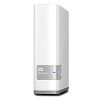Western Digital My Cloud User Manual - Page 108
Connecting a USB Hard Drive, Overview
 |
View all Western Digital My Cloud manuals
Add to My Manuals
Save this manual to your list of manuals |
Page 108 highlights
CONNECTING A USB HARD DRIVE 12 Connecting a USB Hard Drive Overview Connecting A USB Drive Mapping A USB Drive (Windows Only) Creating a Shortcut to the USB Drive (Windows only) Overview When you attach a USB drive to the WD My Cloud device's USB 3.0 expansion port, it becomes a network drive. Now the USB drive has the following capabilities: „ When you connect an external USB drive such as a WD Passport, a memory stick, 2 or a camera to the WD My Cloud device, you can access it with Windows Explorer or Mac Finder. „ The USB drive can serve as a target for backups in WD SmartWare, Windows, or Time Machine. „ You can map the drive as a user share drive (Windows) or an alias (Mac). „ If a WD external drive has been locked, when it is attached to the WD My Cloud device, it maintains that security and can be unlocked or relocked using the Dashboard. „ You can attach a powered USB hub to the external USB port and attach up to seven USB devices to the hub. Connecting A USB Drive Connect a USB hard drive to the USB port on the rear of your WD My Cloud device for additional storage. The USB drive appears as a share on the WD My Cloud dashboard. (See"About Shares" on page 50.) The WD My Cloud device supports the following formats for externally attached USB drives: „ FAT32 „ NTFS (read and write capability) „ HFS+J „ Linux Ext2, Ext3/Ext4 „ XFS WD MY CLOUD PERSONAL CLOUD STORAGE 103 USER MANUAL















